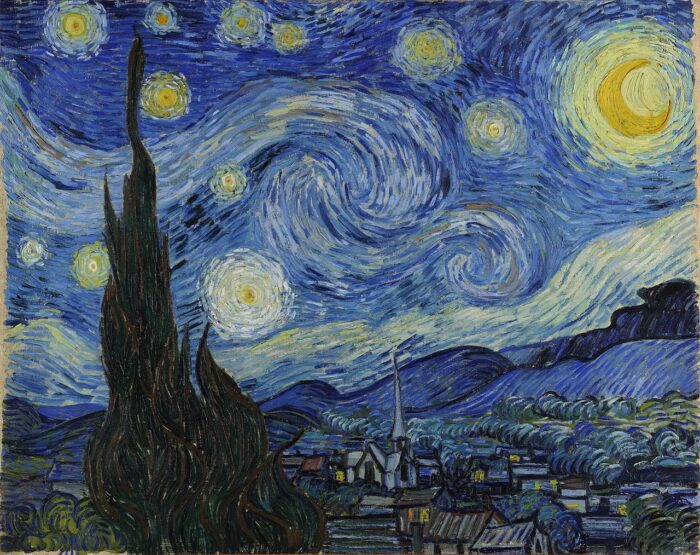“It moves. They are all alive. Even the moon bulges in its orange irons to push children, like a god, from its eye.”
Originally posted by Irene J. Karthik on Substack. To read more on poetry from Irene, check out her previously featured piece, More Poetry Please!
—ii Editorial
I wonder if mid-life means getting ready to deal with an upgraded level of paradoxes. Paradoxes are an integral part of our being. The feeling is that the brush strokes get messier and more colourful. The finitude of life starts showing up more frequently as one grows older. Alas, there is also a childlike joy that leaps forth now and then. It is like creating art. I have been dabbling in art for about a year now. One cannot help but notice how the dichotomy comes alive while making art. My artwork hovers around the territories that represent the beautiful asymmetry of our being. It is not pretty, yet the messiness gives depth to the creations. Like poetry, art can speak to you if you open your heart. Sometimes they can help solve these dilemmas that keep you awake at night.
I have been thinking of finding a little path where I can merge my two adjacent worlds of art and poetry. As you can notice, I am recovering from a hangover after completing a foundation course at art school. I found two poems inspired by famous paintings which were perfect for this week’s edition.
The first poem is by Allen Ginsberg. Cézanne’s painting of a fishing village, L’Estaque, inspired the poem. The painter had a different view and wrote about this place in 1876: “It is like a playing card. Red roofs over the blue sea. . . . The sun is so terrific here that it seems to me as if the objects were silhouetted not only in black and white, but in blue, red, brown, and violet.”
The poet’s perception of the painting has a touch of transcendence. It is very different from the painter’s perspective. What we see and feel when we interact with art is unique for each person.
Van Gogh’s Starry Night Painting inspired the second poem written by Anne Sexton. The poem is rich in the paradox of death.
Cézanne’s Ports
by Allen Ginsberg
In the foreground we see time and life
swept in a race
toward the left hand side of the picture
where shore meets shore.
But that meeting place
isn’t represented;
it doesn’t occur on the canvas.
For the other side of the bay
is Heaven and Eternity,
with a bleak white haze over its mountains.
And the immense water of L’Estaque is a go-between
for minute rowboats.
The Starry Night
by Anne Sexton
The town does not exist
except where one black-haired tree slips
up like a drowned woman into the hot sky.
The town is silent. The night boils with eleven stars.
Oh starry starry night! This is how
I want to die.
It moves. They are all alive.
Even the moon bulges in its orange irons
to push children, like a god, from its eye.
The old unseen serpent swallows up the stars.
Oh starry starry night! This is how
I want to die:
into that rushing beast of the night,
sucked up by that great dragon, to split
from my life with no flag,
no belly,
no cry.
The weather of this week’s edition might sound foggy and dense, but I am smiling as I send this out. I think art, poetry, music, and all similar forms help us meet and become comfortable with these paradoxes that envelope our lives.

